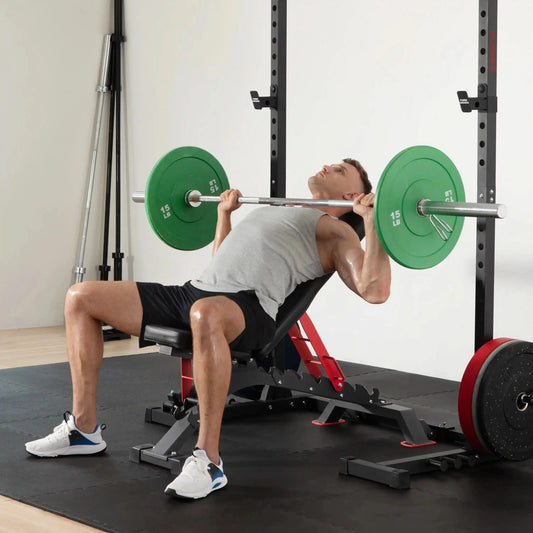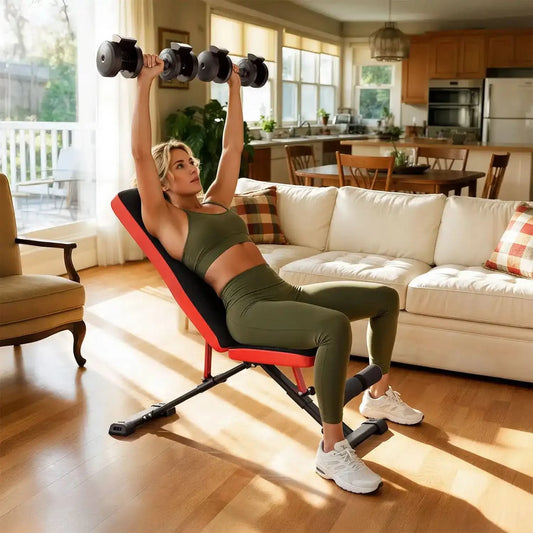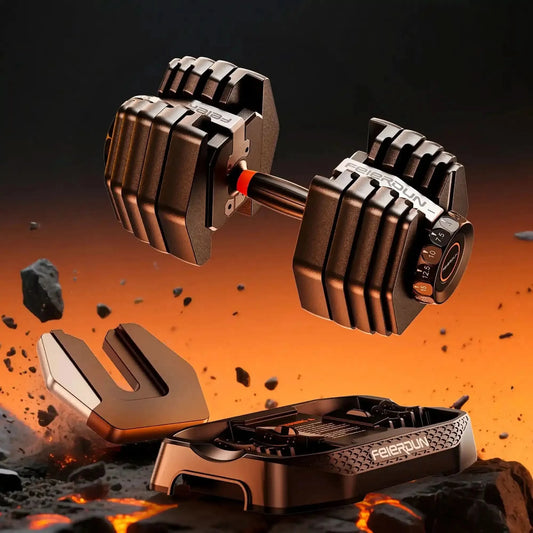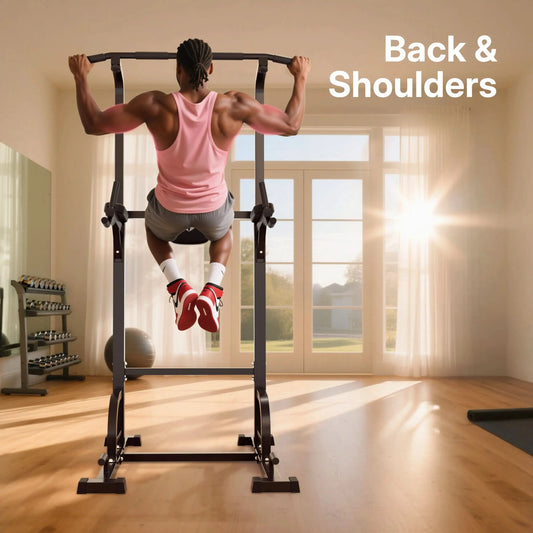Correct barbell care improves the lifespan of your equipment, improves the improvement of lifting, and safeguards you. This article will provide tips on the maintenance of barbells made of steel, stainless steel, and chrome, so you can keep your equipment in a good state over the long run.
Barbells are an important part of the workouts of every serious weightlifter/bodybuilder. They form a greater part of most weightlifting regimes, be it powerlifting or overall strength training. Like any other piece of machinery, barbells require some care in order to ensure they are functioning to their highest level. Unless taken care of, they can be damaged, rusted, or lack the smoothness expected, putting your lifts and even your health at risk.
Why Proper Barbell Maintenance is Crucial
Barbell care is not only about appearance; it also helps keep your bar safe and working properly. Each time you squat, you put stress on the barbell. The improper maintenance may mean that you are risking more than just a rusty bar or a worn finish. In the long run, neglecting to maintain your equipment can lead to safety issues, such as slippery grips or a barbell that fails to spin freely.
Anyone who has used a barbell for any number of years will have discovered that neglecting equipment maintenance can affect performance and increase the risk of injury. A properly maintained weight bar will make your workout easier. With the presence of knurling, the rotation of the sleeves, as well as the lack of rust or dirt on the barbell, you’ll get a better grip and control in your lifts. This contributes to better performance, and it decreases the possibility of injury.
Maintenance Methods for Steel Barbells
Steel barbells are likely favorites because they are strong and hard to break, making them a necessity for every weightlifter's training regimen. However, despite their toughness, steel barbells are extremely vulnerable to rust and corrosion when exposed to moisture, sweat, and environmental factors. To prolong the durability of your steel barbell and have it operate to your best advantage, a regular maintenance routine is inevitable.
Regular Cleaning
At the end of each exercise session, clean your steel barbell by wiping both ends to remove steam and residue. This is essential because sweating of the bar will lead to rusting of the bar in the long run. A microfiber towel or a soft cloth must be used to clean the bar. To provide a more intense cleaning, a mix of a mild cleaner with hot water can aid in that. Do not use harsh chemicals that can destroy the finish of the bar. Moreover, a soft-bristle brush can be used on the knurling to keep it textured and grippy.
Rust Prevention
Stainless steel corrodes like any other steel. This can be avoided by coating it with a thin film of oil or a protective wax following each cleaning. The recommended products to use in this case are 3-in-1 oil or silicone spray
, how to clean and maintain stainless steel can be found
here(NICKEL INSTITUTE). The products provide a barrier shield so that moisture cannot touch the steel. To be on the safe side, heavy-duty athletes operating in areas characterized by high humidity may be required to apply more oil in order to resist corrosion.
Proper Storage
How you store your steel barbell is also important. When not in use, keep your barbell in a dry, cool place. Wherever possible, barbells should not come in contact with moisture or water on the floor. Some barbell racks are exclusive, which helps to prevent rust and scratches on the bar caused by elements.
Wear and Tear Inspection
Steel barbells must also be checked periodically for any form of wear on the knurling or the sleeves. When the knurling is worn out and has been rendered smooth by continued use, this may cause a loss of the hold during lifts. Always check the sleeves to rotate as smoothly as possible. You should clean or change the bearings in case you notice a certain stiffness or gritting.
Maintenance Methods for Stainless Steel Barbells
The stainless steel barbell is another good pick when it comes to durability and an elegant look. Although these barbells are resistant to rust, they require regular maintenance to remain in good condition.
- Clean Regularly
- Barbells made of stainless steel require periodic cleaning to prevent the steel from becoming covered with grime. These are how you should clean them.
- Wipe the bar with a clean, dry microfiber cloth every time it is used to remove body sweat and dampness. The long-term effect of this simple step is no corrosion.
- Use a mild detergent with warm water, and then use a soft tissue or sponge for a deep clean. Avoid abrasive scrubbers, as they can damage the smooth surface of the stainless steel.
- Polish to Keep Shine
- Although stainless steel is shiny, it can get dull over time. Polishing can turn it back into eye candy.
- Use a stainless steel cleaner and a microfiber cloth.
- Polish very mildly to restore the shine to the bar.
- Polishing also helps prevent surface chipping and defends against water embrasures, maintaining a sparkling shine and new look for each barbell round.
- Inspection of Corrosion
- In spite of its resistance, stainless steel will rust in extreme environments. Inspection is important.
- Watch out for discoloration, rust, or pitting, all of which can mean that there is corrosion.
- In the case of observing signs, it is necessary to clean the affected area and apply a thin layer of protective oil in order to avoid additional damage.
- Store Properly
- How you store your barbell is also an important part of its lifetime.
- Your stainless steel barbell should never be stored in a wet/humid environment, as water will cause it to rust.
- Do not store the barbell in areas with high humidity or moisture, such as outdoor sheds, as this may cause the barbells to tarnish.
Maintenance Tips for Chrome-Plated Barbells
Barbells also appear in the visibly polished chrome-plated form. It does, however, have a lovely chrome finish, but it requires enriched care. Since plating wears out over time with heavy use, taking extra care to protect the surface is also important in extending the lifespan of your barbell.
- Apply Soft Techniques of Washing
- Chrome plating is vulnerable to tough chemicals and rough cleaning equipment.
- Frequent cleaning should be done with a dry soft cloth to remove perspiration or moisture after every use. This will prevent rust formation and preserve the surface.
- Soak in a mild detergent solution with water, and remove with a clean cloth. Prevent any scrubbers that would lead to scratches to the chrome finish.
- Avoid Abrasion- Engineering Scrubbers
- Abrasive materials like steel wool or rough sponges can easily damage chrome plating.
- To safeguard the finish, always use soft microfiber cloths.
- You should clean your barbell with soft microfiber cloths. This will avoid needless abrasion on the chrome plating and will tend to keep the surface smooth.
- Make a Defensive Coating
- To add extra protection to your chrome-plated barbell, rub a coat of automotive wax or a special cleaner barbell wax on the barbell.
- This coating layer shall protect the bar and maintain its shine, and prevent corrosion with the components likely to come into contact with moisture.
- Apply this coating regularly to renew the protective layer of this bar.
- Proper Storage
- Years ago, when barbells were chromed, care had to be taken to keep them in proper storage to avoid damaging their finish.
- Store your barbell in a well-ventilated area and make sure that it is not exposed to moisture, as this would cause rusting.
- Take care when putting on or taking off the weights. Dropping the barbell may chip or scratch the chrome coating of the barbell.
Routine Maintenance for All Types of Barbells
Having the barbells made of steel, stainless steel, or chrome does not exempt any of them from going without routine maintenance. Routine maintenance is not only good for performance but also for longevity. Here are some helpful general maintenance tips for all barbells:
- Follow every workout by wiping the sleeves and collars with a dry and clean cloth. Indicate and clear away any intense stains with the use of a mild cleaner.
- Look over your barbell every so often to check it against wear, especially in the knurling. Worn knurling may jeopardize your grip, making lifts harder and less safe.
- It is important to keep your barbell in a dry environment to avoid rust and corrosion. It can be set on a shelf or a rack made specifically to hold the barbell or inside a barbell rack.
- Dusty stores that contain barbells should be cleaned regularly to eliminate buildup.
Conclusion
The maintenance you put into your equipment directly affects the quality of your lifts and, ultimately, progress as a lifter. They all require different maintenance options, but they all share one common promise: a well-maintained barbell is one that is ready when you need it the most. It only takes a little action on your part to maintain your barbell in mint condition, which will result in safer, stronger, and more effective lifts. Take care of your barbell, and it will take care of you, helping you achieve new personal bests day after day.












